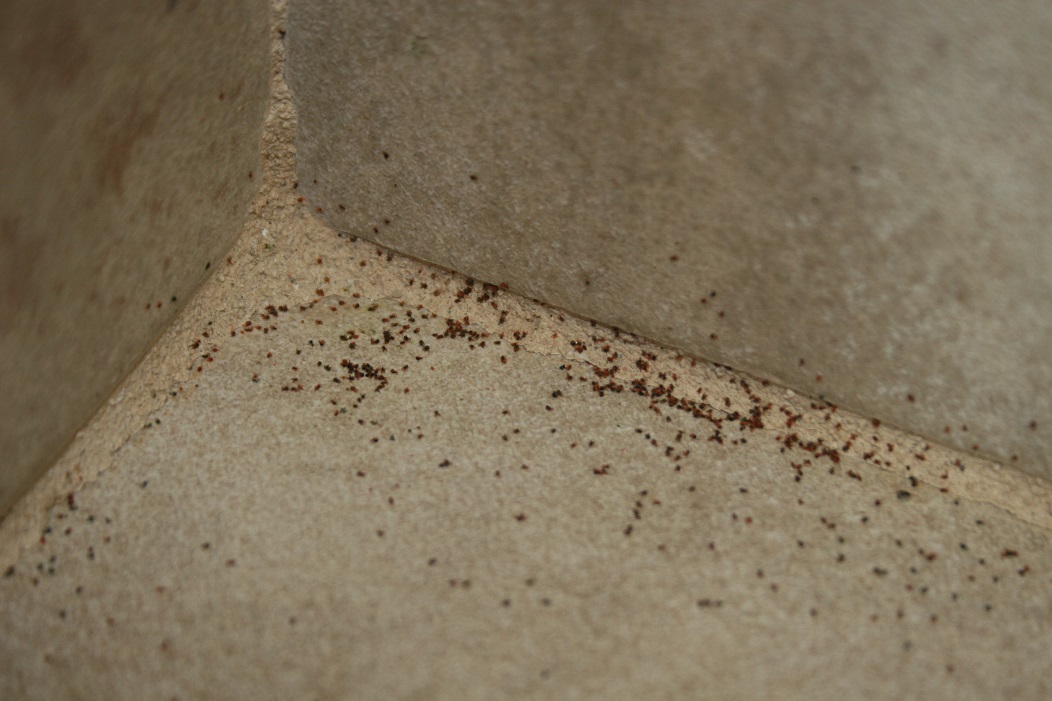–Dr. Raymond Cloyd
We have received inquiries regarding homes being invaded by populations of the clover mite, Bryobia praetiosa. This is the time of year when clover mites can be found entering homes, apartments, and commercial buildings, with large numbers crawling around and causing people to “freak out.” In general, clover mites enter buildings from the sunny-side or southwest exposure. They can aggregate in large numbers in the corners of buildings (Figures 1 and 2). Clover mites are primarily considered a nuisance pest because they do not bite humans. However, clover mites will leave a red stain when purposely or accidently crushed.
Figure 1. Cluster Of Clover Mites In Corner Of Building
Populations of clover mites only consist of females since males have never been found (we may need to look harder). Adult clover mites are slightly larger than a pinhead (1/30-inch long), red in color, with extremely long, pink front legs that may be used to distinguish clover mites from other mite pests. Clover mites overwinter as eggs in protected locations and there is usually one generation per year. Adults feed on over 200 plant types including: clover, grasses, ivy, honeysuckle, apple, and elm. Clover mite populations can be extensive in well-fertilized turfgrass near foundations, and their feeding will cause turfgrass to appear silvery or frosty.
Figure 2. Extensive Population Of Clover Mites Entering Building
The management of clover mites involves the following: 1) remove turfgrass near building foundations; 2) place an 18 to 36-inch wide band of an inorganic mulch around the foundation; 3) mow and trim turfgrass as short as possible; 4) avoid over-fertilizing turfgrass, especially with water-soluble nitrogen-based fertilizers; 5) remove weeds growing around the foundation; 6) remove or limit the growth of ivy or other host plants growing around the foundation or walls; 7) use plants near the foundation that are not typically attractive to clover mites, including: marigold, petunia, geranium, arborvitae, and/or yew; and 8) caulk or seal cracks or openings in the foundation or around window seals. Clover mites inside a home or building can be vacuumed up, however, be sure to avoid crushing them. Applications of insecticidal soap (potassium salts of fatty acids) will kill clover mites on contact. You can trap/capture clover mites on saran wrap (Figure 3) or a hardened surface coated with a sticky substance and position by openings such as window seals. If necessary, consult with a pest management professional for recommendations regarding perimeter treatments of pesticides (miticides) to keep clover mites from entering homes or buildings.
Figure 3. Clover Mites Captured On Saran With Sticky Substance

